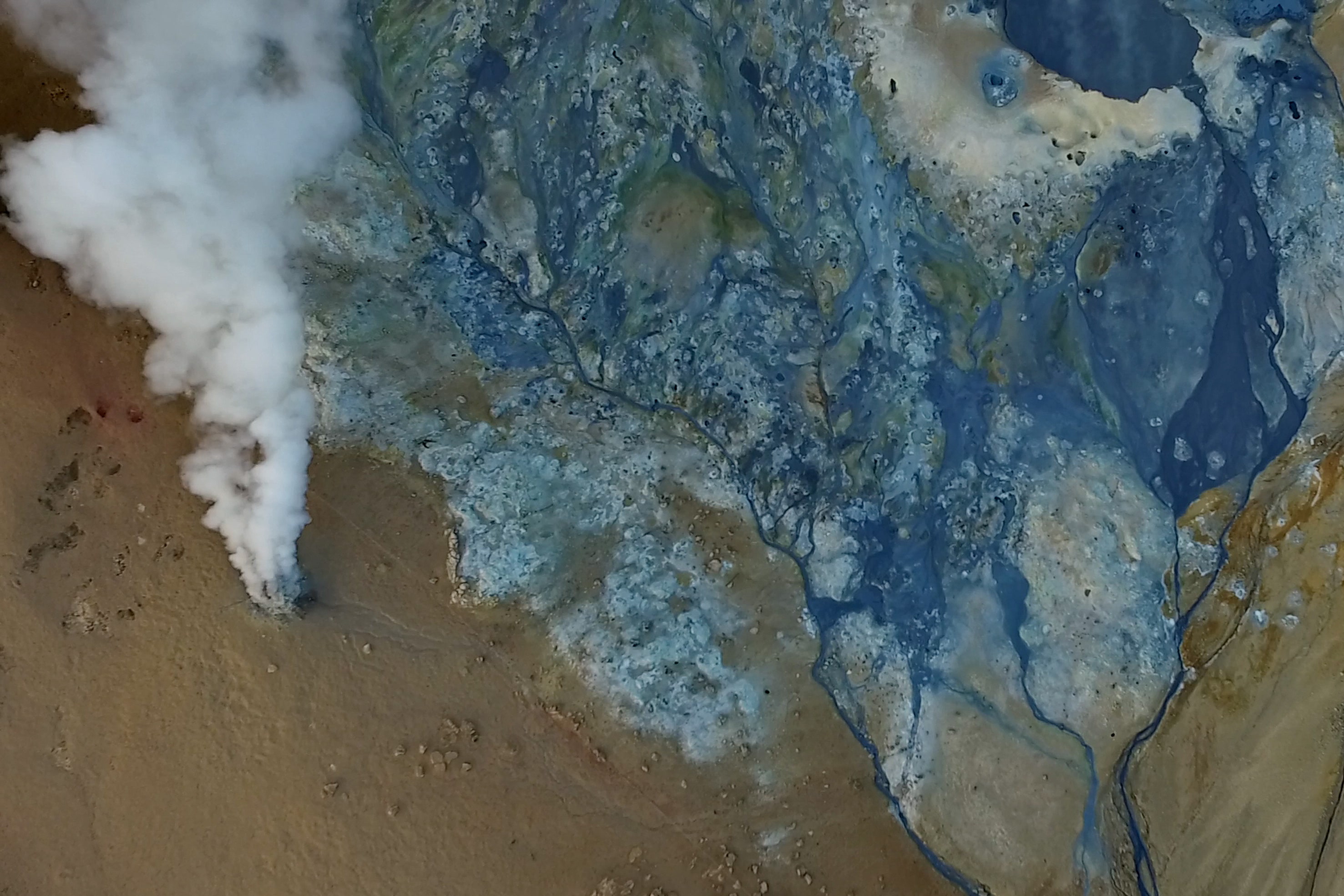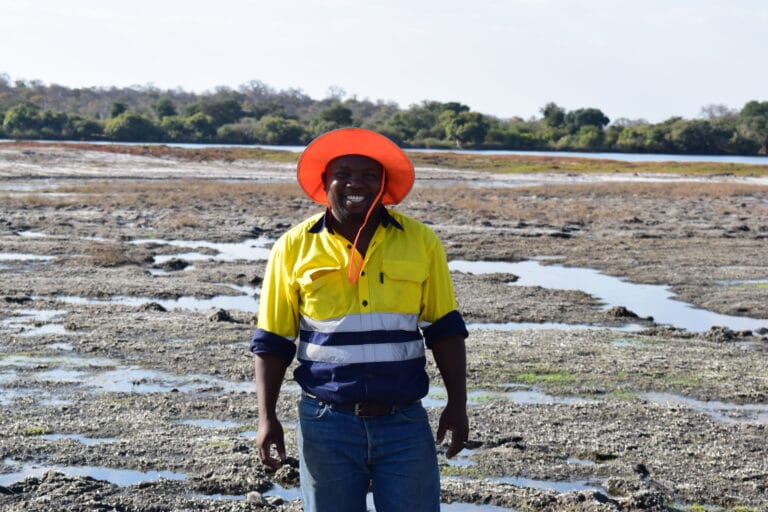
Calistus Ramotoroko explores geothermal potential deep beneath the Kasane hot springs in Botswana, Africa.
Geothermal exploration is on the rise in Africa as the continent hunts for more sustainable energy alternatives.
In the northeast of Botswana, where the Chobe River meets the Zambezi, is a geothermal hot spot – the Kasane Hot Springs.
With the help of data-driven innovation, Calistus Ramotoroko has seen deep inside this bubbling reservoir.
Calistus is a teaching instructor at the Botswana International University of Science & Technology (BIUST) and is currently working on his PhD in exploration geophysics.
“It’s exciting to use digital solutions to help us explore, evaluate and make better decisions on the potential for geothermal energy in this region,” he says.
Tackling the power demand challenge and creating new investment opportunities is high on the energy agenda for Africa.
Rapid growth and transformation put population estimates at 2 billion people by 2050, double the current numbers.
In a drive to meet social and economic goals, the country is looking to foster and harness renewable sources of energy to power such accelerated growth, in a more sustainable way.
“With a global shift away from over-reliance on energy sources such as fossil fuels, geothermal energy offers a more environmentally friendly and commercially viable solution,” says Calistus.
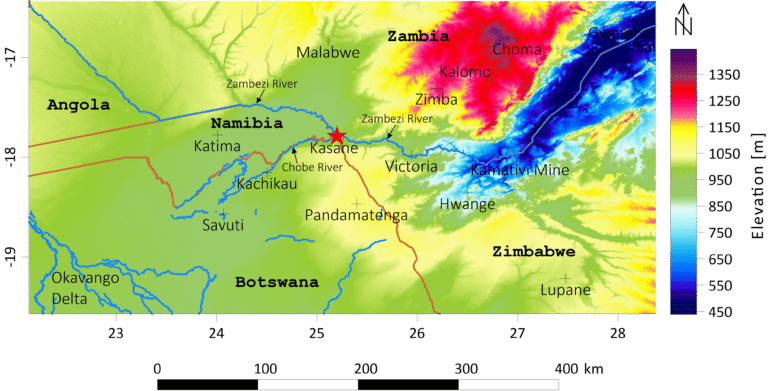
The Kasane geothermal project area, where the Chobe River meets the Zambezi, in Africa.
Using geophysics to find geothermal potential
As Africa explores a transition to more renewable energy supplies, digital solutions are helping to show the way.
“I first used Oasis montaj in 2007 as part of our research to discover more on potential mineral and diamond reserves for mining,” says Calistus.
The tool provides a powerful way to combine, analyse, and visualise complex geophysical data.
“Since 2019, Oasis montaj has supported our research team to build, maintain, and communicate our conceptual geological models of the Kasane geothermal project area,” says Calistus.
The springs have surface water discharge temperatures of 43◦C to 50 ◦C, seen as intermittent bubbling and white steam.
But it’s the temperatures from six to 22 kilometres deep below ground that Calistus and his team are most interested in.
“To make this deep dive we used an estimated Curie point depth (CPD) combined with the spectral centroid method of aeromagnetic data,” says Calistus.
The CPD values were then used to compute the geothermal gradient and subsurface crustal heat.
“Our results show a correlation between shallow CPDs, high geothermal gradient and high heat flow indicating possible geothermal potential here,” says Calistus.
“Further detailed geological and geophysical surveys of the Kasane geothermal project area will help us get a better understanding of this potential resource.”
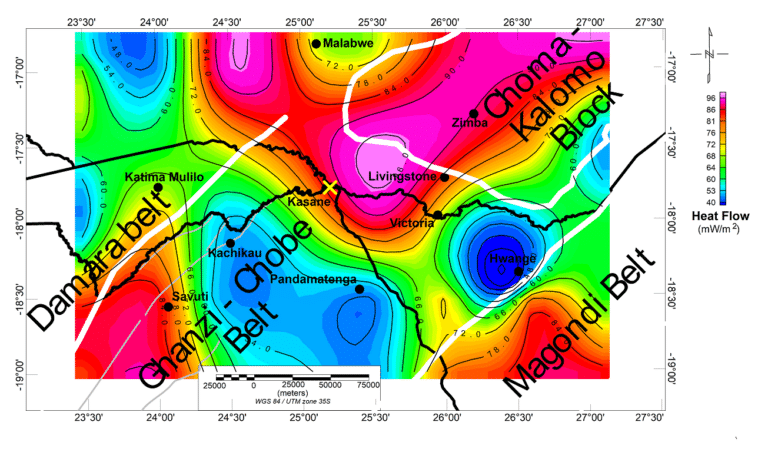
A high heat flow indicates possible geothermal potential in the Kasane project area.
Getting a clear picture of the resource
Geothermal heat can provide consistent “baseload” electrical power that is not dependent on seasonal rainfall variations (hydropower) or weather conditions (wind or solar power).
This makes it both a reliable and renewable source of energy.
However, geothermal exploration, like oil and gas exploration, can be a long, risky, and expensive process.
It often requires special expertise including geological, geochemical, and geophysical surveillance to drill steam wells.
“That’s why we’re interested in getting more visibility from the software first to get a clearer picture of what’s below ground before we start to delve deeper into the project,” says Calistus.
As part of the exploration process the team have created some beautiful models of the Kasane geothermal project area.
“Oasis montaj enabled me to integrate surface and subsurface maps, merge geophysical grids, and apply interactive gridding techniques,” says Calistus.
Though the attempt to apply the power spectrum to the grids was not without its challenges.
“I had to export and then plot these into other software to get the gradient,” says Calistus. “But I see a recent release of Oasis montaj has solved this challenge through the introduction of matched filtering, so I’m looking forward to exploring this new capability more.”
Calistus comments that he often finds it useful to jump online to learn from Seequent’s how-to resources and YouTube videos.
“And if I’m really stuck – I can call on Victor for support!” he says.
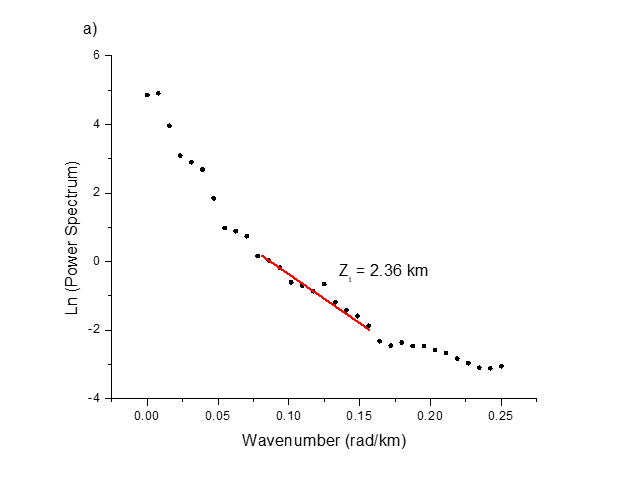
An innovative 2D spectral analysis shows how the depth to the magnetic sources is estimated.
Supporting a new era of energy
Victor Mapuranga, Seequent Customer Solutions Specialist, is based in Johannesburg, South Africa and sees geothermal exploration as an important way forward.
“I think Calistus’ project research is ground-breaking,” says Victor. “My job is to make sure he and his students at BIUST can get the best value from our software and apply it to their needs.”
Victor has experienced first-hand power outages in his city.
“With increased demand and ageing power infrastructure there’s a drive in this region and across Africa, as there is globally, towards finding energy alternatives,” he says.
The potential to generate geothermal energy from the Kasane hot springs region could bring many benefits.
“Geothermal energy is clean, renewable and has a much lower environmental impact than conventional energy sources.”
“I’m excited to be in a role where we can support customers like Calistus and his students as they work towards these important goals,” says Victor.





